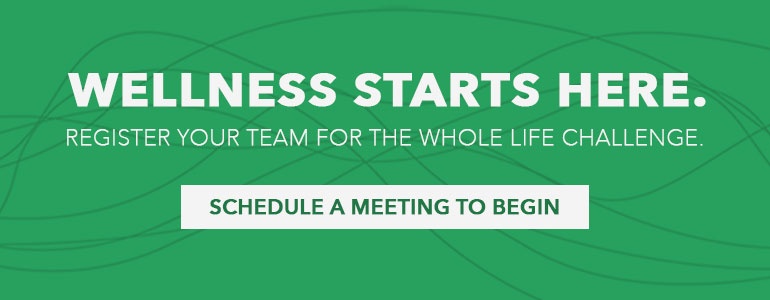This article is the final in a series on mindful leadership from expert and consultant Puja Madan. To understand what “mindful leadership” is and why it’s critical for your organization, read this article. To find out how unconscious bias is impacting your organization and what you can do about it, keep reading.
According to Wikipedia:
Unconscious biases are learned stereotypes that are automatic, unintentional, deeply engrained, universal, and able to influence behavior.
Researchers in France wanted to investigate how “unconscious bias” affected on-the-job performance of cashiers working at a French grocery chain. They measured each manager’s unconscious bias with Implicit Association Test — a measure within social psychology designed to detect the strength of a person’s automatic association between mental representations of concepts.
The results indicated that when minority cashiers worked under managers with a high degree of unconscious bias, they under-performed: taking more time between customers, scanning items more slowly, and almost never working late. When those same cashiers worked with unbiased managers, they were 9% faster and more efficient than their coworkers.
 Leaders set the tone and serve as emotional guides for their teams. Their words, body language, and reactions set the standard for everyone else. When unconscious bias remains unexplored, especially at the leadership level, the entire organization begins to reflect that.
Leaders set the tone and serve as emotional guides for their teams. Their words, body language, and reactions set the standard for everyone else. When unconscious bias remains unexplored, especially at the leadership level, the entire organization begins to reflect that.
For leaders, understanding their own and others’ unconscious bias — whether it’s related to race, age, gender, religion, sexual orientation, language, or communication styles among employees — allows for a company culture that demonstrates respect, acceptance, and inclusion.
So, let’s dive into what exactly unconscious bias is and how it affects organizations.
The Brain’s Need for Bias
It is estimated the unconscious mind processes 11,000,000 pieces of information per second. Compare that to the conscious mind processes about 40 pieces per second. The unconscious mind multitasks for us, processing multiple pieces of information at lightning-fast speed, labeling, filing, and retaining all at once.
So, how does the unconscious mind navigate this sea of information?
The answer is heuristics, which are neural codes that guide us with summarized messages like:
- “Stop at this red light.”
- “That’s a friend.”
- “Cookies are sweet.”
The problem with this shortcut method of processing information is that stereotypes and biases are also part of the package. While this makes our brain efficient, it also has the potential to block out important and critical information when it comes to groups of people.
The Problem with the Current Solution to Unconscious Bias
It’s obvious that diversity and sensitivity trainings are important, and discussions about sensitive topics like race and gender need to occur. However, a Harvard Business Review article argues that mandatory standard diversity and gender-equity training for employees doesn’t extinguish prejudice. It promotes it.
We at The Mindfulness Map believe this is because these initiatives lack the depth to intrinsically change leaders’ perceptions and biases about race, gender, age and other kinds of “otherness.” Instead, we suggest harnessing the power of mindfulness.
Mindfulness has an entirely different impact on how leaders view the world. Instead of intellectually processing information and learning right/wrong, politically-correct behavior, mindfulness reduces implicit bias and creates fresh new perspectives. It enables leaders to move past previously established associations to hire, train, and promote women and people of color.
Mindfulness techniques have the ability to throw a light on unconscious behaviors and biases in a gentle, yet powerful way. These techniques have a profoundly positive impact on how leaders view themselves, the world, and what are called “out groups” — groups that tend to be minimized in society.
Leaders participating in our mindfulness training framework walk away with the following:
- Awareness of how and when key concepts and biases related to gender, race, and power develop.
- A powerful mindfulness technique to release old biases and perceptions and write a new mind-script to see others as equals.
- Knowledge of how to create safe, non-judgmental, and supportive spaces for implicit bias to become explicit, whether their own or others.
- An exploration of the mindful action guide to take these inner shifts into outer practices and policies.
 Where Can Leaders Start: 2 Invitations
Where Can Leaders Start: 2 Invitations
1. Increase Your Self-awareness
Self-awareness is a state of being fully present to your own needs, emotions, reactions, and thoughts. It includes knowing our strengths and gifts, as well as our weaknesses and limitations. It is the capacity to take all inner resources of logic and intuition into account at any given point in time.
When leaders become aware of their personal triggers — triggers that contribute to a range of personal biases — they are turning the implicit into the explicit. And, in that, they are taking control over their cognitive narrative. The possibility then exists to introduce a new thought or belief and release the old one.
Any time a specific emotion or thought comes up in regard to a particular “difference,” we can identify it without judgement.
This self-awareness is crucial for leaders who are responsible for hiring, training, and leading others. Uncovering a bias of any kind, positive or negative, helps us to understand our default behavior and whether it is serving the true purpose of the organization or ourselves, as leaders.
A great place to start is Project Implicit, an initiative that investigates thoughts and feelings that are largely outside of our active awareness or control. Designed by scientists from University of Washington, Harvard University, and University of Virginia, the project offers a series of tests to ascertain implicit bias for outgroups.
 2. Regularly Practice Meditation
2. Regularly Practice Meditation
Biases and stereotypes, as we learned, are a result of our unconscious mind creating neural pathways that become habitual thoughts and beliefs. As it turns out, these neural pathways are flexible and can be altered through the higher states of consciousness cultivated during meditation.
Meditation has been shown to rewire the brain and change negative behaviors and habits. Studies on long-term meditators indicate that fibers in our prefrontal cortex — the home of emotional intelligence — can be greatly strengthened through mindfulness and meditation.
In the third article in my series, I shared a variety of different meditation techniques. Pick one and commit to a more regular practice. In time, through regular meditation, our self-awareness around unconscious bias begins to increase and our brain begins to strengthen the parts that help us see others as equals.
 The Benefits of Exploring Unconscious Bias
The Benefits of Exploring Unconscious Bias
The work of creating diversity, inclusion, and equity in the workplace is neither a short journey nor an easy one. It requires deep courage at the helm to do it right but the benefits speak for themselves. Here’s how:
- Higher Revenue: companies that have more diverse management teams have 19% higher revenue.
- Greater Innovation: inclusive companies are 1.7 times more likely to be innovation leaders in their market.
- Better Decision Making: diverse teams outperformed individual decision-makers up to 87% of the time when it comes to making business decisions.
- Newer Markets: diverse companies are 70% more likely to report that the firm captured a new market.
- Better Performance: most ethnically diverse companies are 35% more likely to outperform the least ethnically diverse companies.
If you missed any part of my six-article series on mindful leadership, just click here to see the full list of titles and learn how mindfulness can take your leadership (and organization) to a whole new level.



